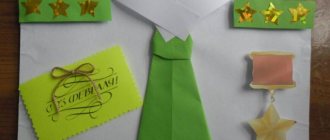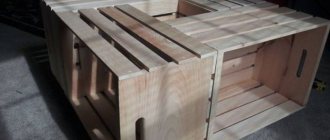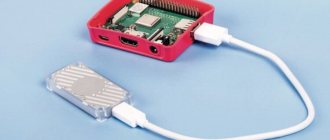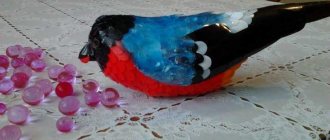Many home craftsmen, carpenters or cabinetmakers, in search of extraordinary ideas for furniture and interior items, have come across the works of Greg Klassen on the Internet. These are beautiful and unusual wooden tables with curved glass embedded into the tabletop, looking like a river bed or the backwater of a forest lake.
Original designer tables from Greg Klassen cost thousands of dollars. This is due to the large amount of manual work involved in cutting glass, making templates and meticulous selection of well-dried wood. Therefore, FORUMHOUSE craftsmen are looking for ways to reduce the cost and simplify the technology, as well as adapt it to domestic realities, which we will discuss in this article.
How to choose glass for a table?
The most important parameter in the characteristics of glass is its thickness. In second place will be the texture: matte, glossy, with a relief pattern. In some cases, the color of the glass will be important. The type of material you choose depends on the purpose of your table. Glass with a thickness of 5-6 mm is suitable for a coffee table. Such products do not experience heavy loads, so this thickness will be optimal. If you are planning a large dining table, then the glass thickness should be 8-10 mm. It is better to order the tabletop itself from a glass company. Using professional equipment, you can cut any shape of the tabletop, as well as carefully process the edges.
Simple glass shelf
Glass shelves can be installed almost anywhere: on a wall, a windowsill, or they can fill a corner of a room. With the help of professionals or with your own hands using a special tool, glass is given different shapes: from rectangular or round to more complex shapes. A small simple glass shelf is always useful for placing shampoo, toothbrush, soap in the bathroom, and in the living room you can put photos of loved ones on it, souvenirs reminiscent of memorable dates, interesting places.
Important information
Experts advise that when starting to select a material, design and independently manufacture a glass shelf, you should take into account some important facts:
- When cutting glass, the result may have an error of 1 mm.
- The edges of the product must be polished.
- When choosing mounting hardware, you need to take into account the thickness of the glass used (ranging from 4 to 10 mm).
- If possible, use tempered glass. It is not dangerous, as it is almost 5 times stronger than usual.
What you need to prepare for work
To make your own glass shelves, you need to purchase materials and tools in advance:
- Glass about 7 mm thick. Depending on the interior of the room, you can choose tempered, colored, black, gray, bronze, matte (or satin), transparent glass with printing or with a sandblasted pattern.
- Fastening elements. A popular model of devices is the “pelican”. You need to buy 2 of them per 1 transverse element. This project will use a metal profile.
- Glass cutter.
- Drill.
- A grinder with a grinding wheel attachment.
- Building level.
- File.
- Duct tape.
- Polishing paste.
- Scissors.
- Roulette.
- Ruler.
- Pencil.
- Cardboard for the template.
Work order
You need to start by preparing a template for one or more shelves (if they are of different sizes and shapes). Before making a cardboard model, you need to determine the exact dimensions of the shelf and the configuration of the wall surface. This will ensure optimal fit of the product during installation.
- Draw and cut out the template to full size. Slightly round the corners of the shelf where it meets the wall.
- Clean the glass from dirt. Use regular detergents for this material. Check: the glass should be at room temperature during operation.
- Cover the flat working surface with a cloth (rag) and place the glass on top of it.
- Place the template on the glass. Using a glass cutter, cut a piece of the required size under the ruler.
- Wear cloth gloves before you begin finishing the edges. Clean the contours of the shelf using a file dipped in kerosene (turpentine).
- To sand the edges, use a grinder with a grinding wheel. Then polish the edges with a grinder and a felt wheel using polishing paste.
- Select a location on the wall where the shelf will be installed. It should be smooth. Using a building level, mark the location for the shelf on the wall with a horizontal line. Mark the locations for fasteners.
- To install the fasteners into the wall, drill holes.
- Using an aluminum profile, check the correct marks for the fasteners.
- Insert dowels into the holes.
- Insert the bracket into the drill in place of the drill.
- Install the screws into the dowels. Place washers on the protruding parts of the screws.
- Screw the brackets onto the wall screws.
- Use a level to check that the brackets are installed correctly.
- Attach duct tape to the back edge of each shelf. This will protect the glass from friction against the metal parts of the fasteners.
- Place the glass on the holders. To prevent it from slipping, put special rubber tires on the metal parts.
Design
The table must fit into the interior of the room in which it will be located. If the furniture in your home is in a classic style, then the table legs should be made of solid wood, with carved patterns and curls. To make the tree presentable, you can cover it with stain, imitating expensive wood. If you have even a little experience in creating furniture, then it will not be difficult to make a glass table with your own hands. The photo shows an option that is made of only one glass.
For lovers of high-tech style, a table with metal symmetrical legs is suitable, and the tabletop itself can be in the shape of a circle or square. The Mediterranean style implies simplicity in the interior, so the glass tabletop can be placed on rough wooden legs of the correct shape, painted, for example, white.
Beginning of work
Start by preparing the base for the countertop. Measure the length of the sides of the glass and cut the bars, there should be four of them. Now sand each of the resulting bars on three sides with sandpaper (do not level the fourth, the one on top, its roughness will increase adhesion to the glue). Now cut four equal-length bars (for legs), the length of which is identical to the desired height of the future table. Sand all sides with sandpaper, and you can begin assembling the structure.
Table with glass top
On a flat floor, place the legs vertically, and between them place (with the rough side down) those first bars that are prepared for the tabletop. Fasten the structure with self-tapping screws; to avoid cracks in the bars, the place where the screws fit can be pre-drilled with a drill of a smaller diameter.
The heads need to be slightly recessed and later covered with plasticine, putty or paraffin. Now turn the resulting structure over and install it on the legs. Prepare glass and a glue gun, as well as any small decor - glitter, beads, beads and other beautiful small-diameter tinsel.
Making a glass tabletop with your own hands
The most important and most expensive element of a glass table is the tabletop. If you are wondering how to make a glass table with your own hands, then you need to know about some rules for glass processing. Cutting it to the right size can be a challenging task for a beginner. Practice on scraps before starting work. If the glass cutter is roller and not diamond, then the pressure force should be approximately 2 kg.
If you have a good, even cut, you can proceed to the next stage - processing the edges. Before starting work, be sure to take care of eye and hand protection. For convenience, you can soak the file in turpentine or kerosene. Movements should be smooth, along the edges of the sheet. You can use an emery block.
Next comes the stage of grinding the edges. To perform this work, a grinder with a special grinding attachment is used. The angle at which the corners are cut should be the same throughout the entire perimeter. Sanded edges are polished. The curve of the tabletop should be smooth and smooth.
Preparing for work
Working with glass requires care and concentration. Remember that glass is a fragile material and can be cut very easily, so it is better to get canvas gloves. To make a table you will need legs and a base for the table top. It is most convenient to work with a wooden beam; it can be square or rectangular.
Materials for working with glass
Do not take a timber that is too thin - if its thickness is less than 3 cm, the finished table may not withstand the pressure during operation and break. Ideally, the sides of the bar are from 5 to 10 cm. Then the finished table will be durable and will last a long time. You can calculate how much of this material you will need by measuring the desired height of the table and multiplying this figure by four, then adding to it the size of the glass perimeter (the sum of all sides).
You will also need a saw to cut the wood, sandpaper to sand the surface, self-tapping screws for better fastening, and a glue gun. Fixation of the tabletop (glass) can be of two types: embedded; invoice. Since to work according to the first type you will need a plane to cut out a groove, and not everyone has one, you should work according to the second method.
Wooden base
To make such a table you will need a 50 x 50 mm beam if you are planning a coffee table. You can use a board, it all depends on the design of the structure.
Let's consider making a glass table for the kitchen with your own hands, measuring 800 x 1400 mm. For such a massive product you will need a beam of 150 x 150 mm. The surface of the timber must be carefully sanded, it must be perfectly smooth. To protect the wood, you need to apply varnish, stain or paint. If you want the structure of the wood to be visible, then use varnish or stain.
To join beam elements, it is better to use an open tenon joint in half a tree. This will disguise the joint and increase the level of strength at the junction. Even a person with a minimum amount of experience in this field can make their own legs for a glass table and a base made of timber on which the tabletop will rest.
A little about the material
In Russia, plexiglass is called polymethyl methacrylate in sheets. In Western countries the name is simpler - acrylic. But this does not change the essence. Plexiglas:
- does not fade or turn yellow when exposed to ultraviolet radiation. The internal structure does not change, intermolecular bonds are not broken or destroyed;
- transmits light well. Depending on the purity, transparency reaches 95%;
- Weighs less than regular glass. It does not require a solid foundation. A plexiglass cabinet will not look like a massive monster and will not push through the carpet or laminate;
- does not collapse under the influence of solutions of acids, alkalis, salts, other chemically active substances and compounds;
- does not allow water to pass through. If you carefully approach the sealing of seams, you can assemble aquariums and cameras for underwater photography from plexiglass;
- withstands years of use without releasing volatile substances harmful to humans;
- easy to cut and bend when heated. A glass cutter with a diamond head is not required to create the desired shape. A sharp knife is enough.
Article on the topic: Do-it-yourself furniture for a baby boom
If we talk about the disadvantages, it is necessary to highlight the instability to mechanical damage. The surface is easy to scratch even with a fingernail. A plexiglass table or other piece of furniture will have to be periodically polished with GOI paste and/or sandpaper.
Metal base
Not every carpenter can afford to use metal. To work with such material you will need special equipment and skills. To connect the elements of the table frame you will need a welding machine. You can use metal tubes, corners or even a profile.
Consider how the glass will be attached to the tabletop. In this case, the tabletop is installed in a special recess, which was formed when connecting metal profiles. All you need to do is fix the glass to the profile with glue. A self-made glass kitchen table on a metal base will ideally complement a minimalist kitchen.
If you intend to manufacture a forged product, then it is better to connect the tabletop and base using mechanical fastening. Holes are drilled into the surface of the glass and fasteners are inserted.
Self-production of plexiglass products
Doing something with your own hands is always pleasant and somewhat unexpected. Moreover, today you can do this not only for the soul, pleasing yourself and your loved ones, but also to produce some products for sale. The Internet world provides all the tools for this: you don’t need to go to the market, stand behind the counter - everything can be done through advertisements or your own online store on the Internet.
Therefore, a new direction has become very popular - creating plexiglass products with your own hands. Let's figure out how this can be done, what you can get and what nuances and secrets there are in all this.
Chipboard base
The simplest material for making furniture is, of course, chipboards. Coming up with a design for a glass table with a chipboard base is not at all difficult. There are a large number of options, colors and textures of laminated coating for chipboard.
The chipboard sheet is cut using a circular saw. The cut produces a rough edge that needs to be covered with an edge. If you don't have specialized edge finishing equipment, don't worry. The end tape can be glued using a regular iron.
The connection of chipboard parts is carried out using euroscrews, self-tapping screws, and corners. The most acceptable option is to use euroscrews. For them you need to make holes in the chipboard using a drill. These screws are tightened with a hex wrench. In the places where the screw heads are located, special stickers are installed to mask the joint.
How to make your own bookshelf from plexiglass
Modern markets for building materials offer a wide range of different products. This allows DIYers to make various original household items. And we know examples where people who make different things with their own hands, so to speak, put their whole soul into these things. Maybe it’s a hobby or a serious matter, but it’s always interesting creativity.
We suggest you try to make a bookshelf from plexiglass yourself. Many interesting items are made from plexiglass. After all, it can be easily cut, drilled, glued, and bent under high temperature.
Therefore, there are so many opportunities for imagination and creativity! You can make wonderful gifts from plexiglass.
Necessary tools and materials for working with plexiglass:
- - roulette;
- - pencil;
- - level, wooden or metal corner;
- - metal ruler;
- - cutter (sharp knife);
- — special glue for plexiglass;
- - awl;
- — a drill with a set of drills.
Before you start making a bookshelf from plexiglass, you need to think over a sketch, model, and the plexiglass itself of the required thickness. You can prepare colored plexiglass for originality. When purchasing plexiglass, you can order cutting of the main parts to the required sizes for a fee.
Option 1
Finished workpieces (plates, canvases) are fixed at an angle of 90 degrees or at an acute angle to the surface (wall, door) in any way that suits you, and in any order, for example, in a row vertically or horizontally, or in the form of a step. For decoration, you can use interesting lighting using LED lamps.
Option 2
Two prepared plates are glued at right angles to each other with their long sides. Thus, we get a corner. We make the required number of such corners. Then we secure the prepared corners together by gluing them with vertical plates. In this case, you get a rack of three shelves. We place the prepared rack (book shelf) on the floor or place it on a bedside table (table) and attach it to the wall.
Option 3
We attach the prepared corners to the wall in different orders, depending on the features of the interior. Can be secured in a checkerboard pattern or asymmetrically. Plexiglas corners are attached to the surface in any way that suits you.
Option 4
Using a heating element (blowtorch), we bend a plexiglass plate, for example, 15–18 cm wide, into the shape of a huge oval or heart. Under the influence of temperature, plexiglass bends in a given direction. We glue small plates of the required size to the surface of the plexiglass plate; this is necessary to keep the books on the shelf. We attach the resulting structure in the form of a shelf for books to the desired surface in any way that you know how to use.
Option 5
From the prepared plates we make a bookshelf, which we attach in the corner. To do this, cut out a right-angled triangle (several pieces) from the canvas. We glue vertical plates to the legs of the triangle. Now the shelf is ready.
Tip one:
In industrial production, plexiglass is cut using special laser cutting equipment, and the most complex contours can be obtained. Cutting plexiglass at home is more difficult. To do this, you will have to work with an electric jigsaw, a sharp knife (cutter) or a hacksaw for metal. The process of working with a cutter is very labor-intensive. When cutting plexiglass, it is very important to press the ruler tightly against the sheet and make the first notch, then make sure that the blade does not slip off the marked line.
Tip two:
The procedure for gluing plexiglass has its own specifics. Before gluing surfaces, they must be degreased with acetone or gasoline. Then apply glue to the desired areas of the parts and quickly connect them. Additionally, apply glue to the place of the resulting connection of the parts - this way you get a strong seam. For work, it is recommended to use two-component glue.
Plexiglas products can be transformed. Using adhesive double-sided tape or transparent glue, you can apply a design or figures made of any material to the product. The originality of the product will be given by engraving done by yourself using a special device. You can cut out the design using a hand jigsaw, and then arrange the backlight. Correctly executed drawings and organized lighting will enrich the overall appearance of your room.
You can also make a bookshelf with your own hands from wooden blanks. We purchase ready-made wooden brackets and planks from specialized stores. At home, it is enough to assemble a bookshelf yourself from these prepared planks. What’s especially interesting is that you can use your imagination. The kit includes screws, nuts, fasteners, and drilled holes. If necessary, according to your model, you can add or remove something, paint or varnish, like custom-made kitchen facades.
How to attach glass to the base?
There are several ways to attach glass to a base; the choice of the appropriate method depends on the materials and weight of the glass. If the glass is massive and thick, then you can simply install rubber fasteners on the surface of the tabletop; the mass of the glass and the friction force will not allow the tabletop to move.
The mechanical method of fastening is as follows: holes are drilled in the glass and fasteners are inserted into them. There must be rubber gaskets between the metal of the fastener and the glass.
In some cases, the glass is glued to the surface of the underframe. This is a very common fastening method. The main thing in this case is to choose the right glue. It must be compatible with the materials used.
Another time-tested method of securely fastening glass is using rubber suction cups. This fastening method is often used when it is necessary to secure a tabletop with a wooden base of a non-standard shape.
Comparison of acrylic and glass
In terms of external characteristics and some other aspects, acrylic is more reminiscent of glass than plastic. But in both cases, the superiority is on the side of the material in question.
By making furniture from it, in comparison with glass, the consumer receives the following advantages:
- multiple superiority in strength;
- significantly improved impact resistance;
- increased security;
- acrylic is approximately 50% lighter than a glass product of similar dimensions;
- polymer is easier to process, which expands the possibilities for designers;
- If the furniture is transparent, the resulting scratches can be easily polished.
As you can see, the total domination of our today's hero. But to buy such furniture, you will have to shell out a decent amount of money.
Whether to use acrylic furniture or not is up to each individual. But acrylic can be used as an idea to create your own business. If interested, read more detailed material at this link.
Imitation glass using epoxy resin
Epoxy resin can be used to make not just a table, but a work of art. Particularly interesting are the tabletop options, which include time-warped wooden elements connected with transparent epoxy resin.
To make such a glass table with your own hands, we will need a suitable cut of wood. It is desirable that it has cracks and signs of aging. You can add irregularities yourself by artificially aging a wooden piece. Two elements of wood 4-5 cm thick are laid out at a distance of 20-30 cm from each other. The uneven side surface should be between the saw cuts, and the edges of the tabletop should be smooth and even. The surface is carefully polished and leveled.
A container for casting epoxy resin is constructed - bottom and walls. You can color the resin using pigments. After the resin is poured into the container between the two halves of the tree, you need to wait about 1 day. After complete drying, you need to cover the surface of the product with several layers of varnish. Remember safety precautions when working with epoxy resin. A respiratory mask and gloves are required. Resin is toxic and can cause poisoning.
Pros and cons of glass structures
The positive qualities of glass tables include the following:
- beauty, neatness, lightness of appearance;
- the ability to fit such a piece of furniture into almost any design;
- ease of care, hygiene, environmental friendliness;
- sufficient strength;
- resistance to chemical environments, moisture and environmental temperature conditions.
Among the disadvantages of glass tables are the following features:
- There are often stains on the glass from water or incorrectly chosen care products;
- low-quality or cheap material gets scratched quickly;
- fingerprints often remain on the glass;
- if handled carelessly, you can get cracks and chips, or even break the table;
- ready-made structures are not cheap.
Table with glass top in eco-style
Recently, rough interior elements have been gaining popularity, which are transferred almost unchanged to our home from the wild. Eco-style is a direction of interior design that involves the use of natural materials or their imitation for the design of furniture, walls, floors, and decorative elements.
Large driftwood or tree roots are an excellent basis for making a glass table with your own hands. This piece of furniture looks very original. The process of processing natural material itself can take a significant amount of time, but this process should not be neglected.
The first step is to remove the bark and flaking rotten elements from the wood. A strong frame should remain. All bends must be sanded. At the point where the glass is attached, you need to cut down the branches so that they form supports for the surface of the glass. At the final stage, you need to treat the wood with several layers of varnish or stain. It is better to fasten glass using suction cups, as other types of fastening will look unsightly.
Preparation of tools and materials
For work you may need:
- drill or screwdriver with a set of bits and drills;
- jigsaw or hand saw;
- electric milling machine, folding cutter or zenzubel - types of planes for cutting quarters under the top glass;
- a plane if the boards are not planed or sandpaper with a holder;
- screwdrivers;
- miter box and file, square;
- ruler, pencil;
- brushes, paint trays.
A garland is used as lighting.
Additionally prepare:
- bars with a section of 40x60 mm;
- boards 24x60 mm;
- boards for decorative frames;
- self-tapping screws 4x50 mm;
- Chipboard or laminated chipboard according to the size of the table;
- silicone glue or double-sided foam tape;
- mirror film;
- wood glue;
- mirror and glass according to the size of the table;
- wood stain, paint or varnish.
The missing tools can be rented from construction stores or you can find such a service in advertisements of private companies.
Kitchen set
Kitchen. They spend a significant part of their lives here. And this room should be comfortable and cozy. If there is a bar counter, it will be complemented by a stool made of plexiglass, in particular, matte. You can take the finished structure as a basis, and replace the upper part with an original plastic part with a thickness of at least 20 mm. The edges are carefully processed and polished.
Tabletops and aprons are also made from acrylic. They are supplemented with lighting, photo printing, sandblasting or laser engraving. The main advantage of such a countertop is that it is easy to clean from any grease and dirt. Got scratches? A few minutes of polishing, and the surface sparkles like new again.
Step-by-step instruction
To create a plexiglass tabletop yourself, you need:
- Cut a piece of material to the required size. To do this, first measure the required length and width with a tape measure, mark the surface with a marker, then apply a metal ruler to the desired area and cut off the plexiglass using a glass cutter, having previously placed the material on the prepared surface. In this case, it is necessary to do this in 1 time, so the edges will be more even and smooth. To achieve this, you need to slightly lubricate the glass cutter with vegetable oil, so it will be easier to walk on the surface of the material.
- Process the edges of the product with a file, remove all sharp elements and irregularities so that the cut areas become as smooth as possible.
- Sand the ends of the product using a grinder with a sanding attachment. Using this tool, you can give the tabletop a special shape with rounded edges. This option is considered more aesthetic and less traumatic.
- Polish the surface of the countertop with a special paste. Remove any remaining product with a soft cloth soaked in detergent and treat the plexiglass with acetone.
- Using a special glue, the finished tabletop is fixed to the structure, after which it can be used for its intended purpose.
Article on the topic: Program about 100 DIY furniture
To give the product an even more original look, you can additionally decorate the plexiglass. To do this, a variety of techniques are used, for example, decoupage, etching, applying graphic and stained glass designs, tinting, and using various decorative elements (stones, shells, beads).
Step-by-step instruction
To create a plexiglass tabletop yourself, you need:
- Cut a piece of material to the required size. To do this, first measure the required length and width with a tape measure, mark the surface with a marker, then apply a metal ruler to the desired area and cut off the plexiglass using a glass cutter, having previously placed the material on the prepared surface. In this case, it is necessary to do this in 1 time, so the edges will be more even and smooth. To achieve this, you need to slightly lubricate the glass cutter with vegetable oil, so it will be easier to walk on the surface of the material.
- Process the edges of the product with a file, remove all sharp elements and irregularities so that the cut areas become as smooth as possible.
- Sand the ends of the product using a grinder with a sanding attachment. Using this tool, you can give the tabletop a special shape with rounded edges. This option is considered more aesthetic and less traumatic.
- Polish the surface of the countertop with a special paste. Remove any remaining product with a soft cloth soaked in detergent and treat the plexiglass with acetone.
- Using a special glue, the finished tabletop is fixed to the structure, after which it can be used for its intended purpose.
Article on the topic: DIY loft furniture frame for mirror
To give the product an even more original look, you can additionally decorate the plexiglass. To do this, a variety of techniques are used, for example, decoupage, etching, applying graphic and stained glass designs, tinting, and using various decorative elements (stones, shells, beads).
What you need
To make the countertop you will need the following materials:
- plexiglass 6–12 mm thick;
- glass glue (with its help the product will be attached to the structure);
- cleaning agents and acetone for degreasing the surface;
- sunflower oil;
- the surface on which the glass will be cut (you can use thick plywood or chipboard);
- polishing paste;
- marker (felt-tip pen) for marking;
- measuring materials (long metal ruler, tape measure);
- glass cutter;
- grinder with grinding tip, file;
- soft cloth to remove crumbs that appear while cutting plexiglass;
- protective equipment (special glasses, gloves).
What types of sliding tables are there?
It should be noted that both dining and work tables are of sliding or folding type. However, most often they are installed in the kitchen or dining room.
According to the method of increasing the area, tables for small rooms are:
- folding;
- sliding.
The first option is quite simple - the tabletop is secured here using ordinary furniture hinges. When it is necessary to increase the area, it is moved back and secured to the leg.
If you wish, you can create a large folding table with your own hands
Sliding tables are a structure whose area increases thanks to a built-in mechanism or guides.
Table 1. Types of transformable tables.
| View, illustration | Description |
Folding book table | This is the most famous folding table, which was popular back in Soviet times. When assembled, it looks like a cabinet, and if necessary, you can quickly unfold the tabletop and leg. Modern models can already have a different appearance, many of them are distinguished by the presence of small folding parts on both sides, making the table more functional both when folded and disassembled. |
Folding table with swivel top | This is another unusual folding table model. When it becomes necessary to unfold it, the tabletop rotates 90 degrees. This is a very simple mechanism that will function for many years - there is simply nothing to break here. |
Extendable kitchen table | In this case, the tabletop is divided into two equal parts in the middle using telescopic guides. In the normal position, these parts are fixed, and when the need arises to increase the area of the structure, it will be enough to pull the table by the edges on both sides. The guides move apart very quickly without any extra effort. In Soviet models there was only one additional board, thanks to which it was possible to increase the dimensions of the table; modern products require the presence of two central tabletops. |
Table with folding mechanism | There are various sliding mechanisms for tables. They are usually made of aluminum or galvanized. If you choose the second option, the possibility of rust cannot be ruled out, because liquid may leak from the table onto the mechanism. The principle of the mechanism is that you just need to pull it, and it will expand the table itself. The main disadvantage of this option is the too high cost of the structure. |
Advantages and disadvantages
The advantages of polymethyl methacrylate are:
- increased strength and practicality;
- low specific gravity;
- ergonomics;
- hygroscopicity;
- impact resistance;
The big advantage of acrylic glass is its impact resistance - no difficulties with care;
- variety of colors and the ability to decorate panels.
The peculiarity of the synthetic polymer is its high hygroscopicity. The material does not absorb moisture and, accordingly, does not deform as it dries. The hygroscopicity of plexiglass protects the table top from getting wet and swelling.
As for the disadvantages, it is worth noting:
- fragility and low impact resistance of extruded polymethyl methacrylate;
- presence of sharp corners.
What you need
To make the countertop you will need the following materials:
- plexiglass 6–12 mm thick;
- glass glue (with its help the product will be attached to the structure);
- cleaning agents and acetone for degreasing the surface;
- sunflower oil;
- the surface on which the glass will be cut (you can use thick plywood or chipboard);
- polishing paste;
- marker (felt-tip pen) for marking;
- measuring materials (long metal ruler, tape measure);
- glass cutter;
- grinder with grinding tip, file;
- soft cloth to remove crumbs that appear while cutting plexiglass;
- protective equipment (special glasses, gloves).











